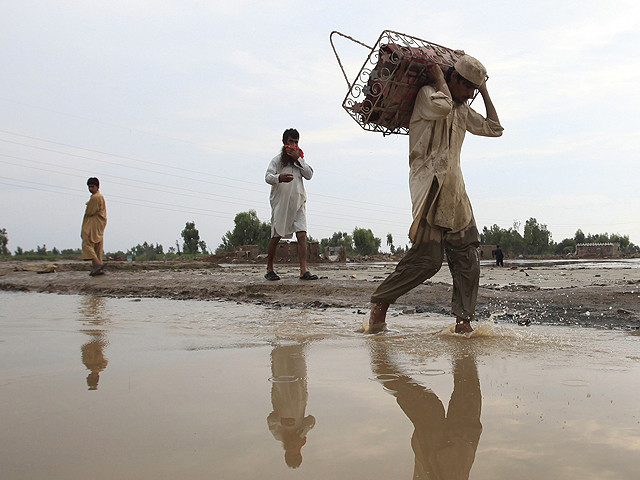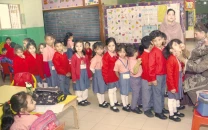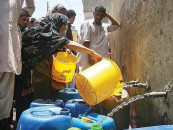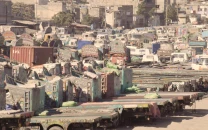Floods aftermath: ‘Upper Sindh faces threat of waterborne diseases’
Former adviser feels govt has failed to carry out a complete assessment of damage.

Contradicting the figures of the National Disaster Management Authority and the Provincial Management Authority, he said that the government’s estimate of 500,000 affected people is not true. PHOTO: REUTERS/FILE
There is a threat of waterborne diseases in upper Sindh with the post-monsoon season just around the corner, warned Haleem Adil Sheikh.
At a press conference on Friday, Sindh’s former relief minister and the chairperson of Pakistan Relief Foundation pointed out that several areas in upper Sindh are inundated while the government’s response to the thousands of displaced families is also deplorable.
Contradicting the figures of the National Disaster Management Authority and the Provincial Management Authority, he said that the government’s estimate of 500,000 affected people is not true. “The figure is over 800,000.” He also criticised the response of the government to the affected families. “Only 10,000 tents and 6,000 mosquito nets were provided to the thousands of families which is insufficient,” he added.
Only a few areas inundated in early August in Karachi were highlighted. “The situation across the province is more critical,” he said. Even several villages in Gadap Town are still facing trouble. “The government has not managed urban assessment as yet and it hardly seems it will be able to get the entire estimation of the damage across Sindh,” said Sheikh.
“The emergency didn’t end but it starts now,” he feared. “The diseases spread after the floods and we have an example from last year when 700 children died of measles.” The former adviser to Sindh chief minister for relief said that the situation would be out of control if appropriate measures are not taken on time. “The post-monsoon season is about to arrive. The situation will be even serious if rain hits Khyber-Pakhtunkhwa and Kashmir.” Sheikh and his PRF team had recently visited all the affected areas of the province, such as Khairpur, Ghotki, Kandhkot-Kashmore, Sehwan Sharif, Dadu, Jamshoro, Hyderabad, Matiari and Naushero Feroze. “There is an acute shortage of relief items,” he observed in these districts. “The government has distributed only 1,500 ration bags.”
On an urgent basis, Sheikh demanded the government sent medical and relief teams, mosquito nets and tents to the submerged villages but, on the long term, he suggested the government set up a rescue institute.
Published in The Express Tribune, September 8th, 2013.



















COMMENTS
Comments are moderated and generally will be posted if they are on-topic and not abusive.
For more information, please see our Comments FAQ